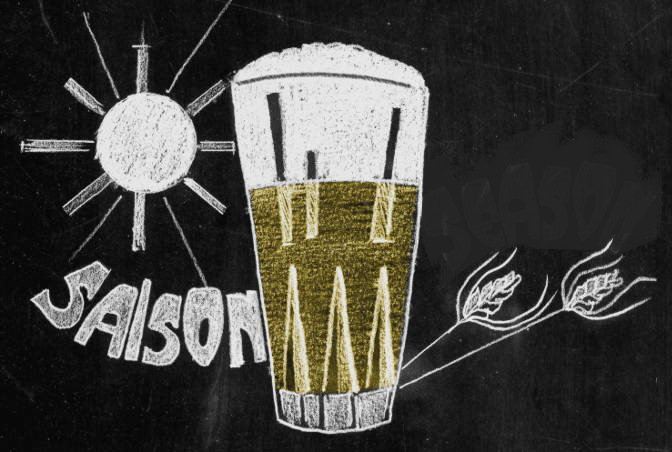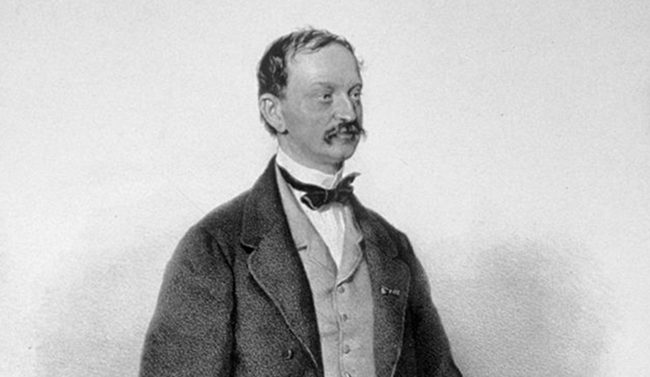Visit the Boak and Bailey's Beer Blog site
Here’s all the writing about beer and pubs that grabbed us in the past week, from equality initiatives to the specifics of European beer styles.
We’ll start with a flurry of accidentally interconnected items about pubs and how welcoming they might or might not seem to different people and groups.
British political Twitter spent a good chunk of the week talking about pubs after actor Eddie Marsan said that he didn’t like them, associating them, based on his own childhood experiences in the East End of London, with domestic violence and macho posturing.
Meanwhile, two related schemes have launched with the intention of making pubs more inviting to a wider range of people. First, with*Melissa Cole at the helm, there’s the*Everyone Welcome Initiative:
The aim of this initiative is to provide beer venues and events with a strong statement that everyone who walks through the door is welcome regardless, of their gender, sexual orientation, race, health, religion, age or disability… Whilst these forms of discrimination are covered under the Equality Act 2010, none of us can say that they don’t happen and what this initiative is designed to do is give people the opportunity to nail their colours to the mast about the kind of venue or event they are running – to shout proudly that hate isn’t to be tolerated and ignorance is not an excuse.
The Equality in Pubs*accreditation scheme, led by*Jessica Mason, launched a few days later:
Publicans who would like to let visitors know that their pub has a zero tolerance policy on abuse in any of its forms can now sign up to TEPA and, from 2019, gain a window sticker and a plot on a map on TEPA website to let people know that their pub doesn’t support homophobia, sexism or racism in any of its guises from neither its staff or it’s drinkers. Joining TEPA means the publican has a civic duty to act should they recognise abuse in their venue.
We’ll finish with a link to something we wrote last year which appeared this week at All About Beer*after a long delay, thus seeming accidentally topical:
[If you] find yourself in a pub where you oughtn’t be, it will usually be made clear to you, as long as you are reasonably fluent in the language of passive-aggression. It might, for example, take a long time to get served, if the person behind the bar acknowledges you at all. You might get asked point blank if you are a police officer, which happens to us not infrequently—something about our flat feet, perhaps. Or the regulars might start a loud, pointed conversation about strangers, or foreigners, or people wearing whatever colour hat you happen to be wearing. We once walked into a pub only to be greeted by five men in soccer shirts, one of whom simply pointed and said: “No, no—turn round and walk out. Now.” We did so.

Roel Mulder continues to question the accepted history of Belgian beer at*Lost Beers, this time questioning just exactly how sure we can be that saison was really “a typically rural beer or specifically aimed at farm workers”:
[The] oldest mention of saison that I found dates from 1823, where it is described as ‘Advent or March beer, excellent beer that is brewed in Liège and that can be kept.’ Liège, for those who do not know it, is a typical industrial city with coal mines and metal industry, and this was already the case in the early 19th century. Hardly a rural environment, you would say. Also, it is not in the province of Hainaut.
(But the long, gently resistant comment at the bottom from Lars Marius Garshol is also worth reading.)

We’re vocal fans of*Stan Hieronymus’s book*Brew Like a Monk and yet for some reason never got round to reading his book about brewing with wheat, perhaps because wheat beer seemed less interesting to us than Trappist brewing. Well, if the extract he has shared for Session 137 is anything to go by, then we’ve been missing out:
Listening to Josef Schneider talk about brewing wheat beers could make you start to think it is simple.
Does he worry about haze stability?
“You brew the beer right, you serve it fresh, it is not a problem.”
Would he consider making a beer without using a decoction mash? (The look on his face indicated just how crazy he thought this question was, but he answered anyway.)
“Bavarian beer must have more malt flavor. You must cook it long to make it that way. Otherwise you have Warsteiner . . . or American beer.”

One of our favourite sub-genres of beer writing is the deep reflection on a well-known beer, such as this by*Alec Latham*on Guinness. The fun is in finding something new to say about beers that have already been well worked over, which effort sometimes squeezes out startling insight, or poetry:
There’s something else about this beer I don’t like and it takes me a little while to put my finger on it. It’s in the viscosity itself. The mouthfeel is malty but it clings afterwards and makes me think of Vaseline. Perhaps that’s too strong – more like the texture of the neon-pink spoonfuls of antibiotics I was forced to swallow as a child.
(When did we last have Guinness? A week ago. We drink it quite frequently as a side-effect of our #EveryPubInBristol mission and it’s no hardship every now and then.)

Is it safe yet to reflect once more on what we call that category of beers that isn’t the other category of beers? You know — that type of beer some people are into, rather than the type they’re not.*Katie at*The Snap & the Hiss asked people on Twitter whether they use the term ‘craft beer’ and used the responses as the starting point for thinking about how to talk about those beers without it:
It’s a convenient phrase… especially if you’re looking to describe a different type of beer to someone who might not be familiar with it. Saying “it’s just beer” is true, and all well and good, but offering a passion fruit Gose to a person who understands “beer” to be either Fosters or a pint of bitter will leave them confused, stunned, and no doubt disgusted. It’s about context, but it’s also about understanding.

Andreas Krenmair*is continuing his attempts to pin down the specifics of Anton Dreher’s Vienna beer, one of the foundation stones of modern lager, and this week revealed a few more nuggets of information that lead to a “pretty complete” spec for the beer as it was c.1887.
We don’t normally link to articles locked behind paywall but we’ll make an exception for this*by Dean Robie*at business journal*Merger Market, the full text of which we were sent in a message:
Thornbridge Brewery is looking to raise GBP 10m in the next two years, CEO Simon Webster told this news service…. To finance the craft brewer’s expansion, Webster is open to selling a stake to either a megabrewer or a private equity…. Thornbridge has been in touch with several industrial as well as “half a dozen” private-equity suitors, he said.
Hardly shocking news but it’s interesting to see it being discussed (relatively) openly.
And finally, for old time’s sake, and because it might be useful gen for some of you holidaymakers out there…
Get down to The Star Inn, Crowlas this weekend for a genuine rare beer experience. Pete has finally tapped his cask of the 1st ever brew of
#BigJob which he has been nurturing since 2012. On the bar with his own 8 yr old 8% L8TR and 2 yr old Scilly Stout
@StAustellBrew
pic.twitter.com/oDEr8fDUUX
— Roger Ryman (@roger_ryman)
July 4, 2018
More...









 Reply With Quote
Reply With Quote